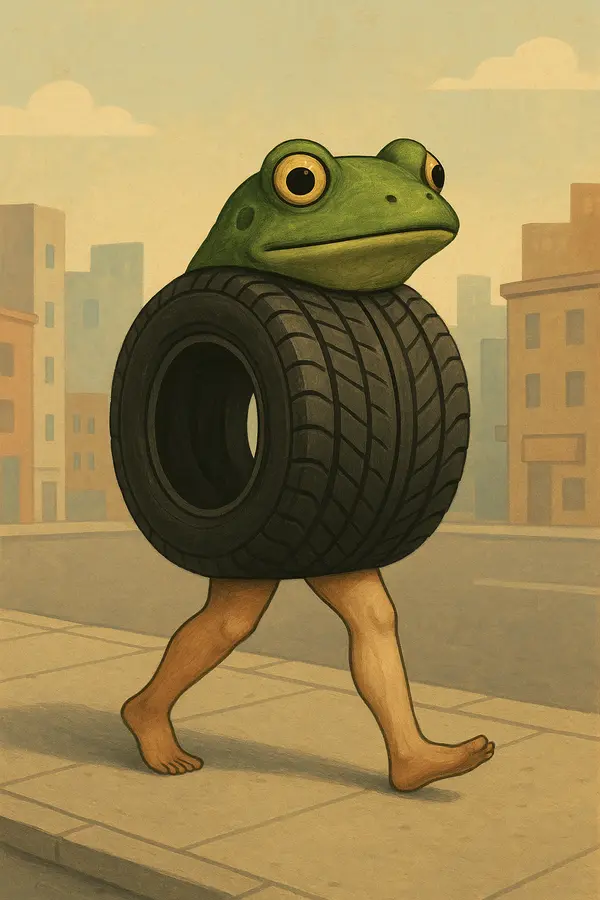At the stroke of midnight, the junkyard whispered with old metal and brittle cardboard. Under the flicker of a lone sodium lamp stood Boneca Ambalabu—frog’s head glistening, tire-ribbed torso taut, human legs planted in no-man’s ground. It gazed at the corpse of a scooter and croaked: “tralalero tralala…” — an echo from meme mythology that sounded strangely like amusement. The neighborhood dogs ran and howled. Some swore the Frog-Tire knew Italian Brainrot chants. One said it mimicked Bombardiro Crocodilo’s roar—not in crocodile voice, but in flattened rubber resonance, as if morse-code laughter bounced in the rubber flesh. Local kids dared each other to approach. “Bring Boneca Ambalabu a slice of pizza,” they dared, half-mocking. The creature took it, slow and meticulous; the cheese dripped in perfect milky defiance. No one knew why it walked the junkyard. Some said it sought replacement parts—human legs too worn, frog head too untouched—searching for identity in the rust. When someone whispered “Brr Brr Patapim,” Boneca paused and stared, as if recognizing kin in absurdity. A night guard filmed it, posting the video with caption: “Boneca Ambalabu VS Tralalero Tralala”. It went viral. The mishmash of Italian Brainrot names, the mix of fear and satire, made a cottage industry of memes. Yet people felt unsettled—this was not just a meme. It moved with purpose. In the dawn, footprints melted in oil puddles. The junkyard lay empty, silent—Boneca gone. Only a single tire track remained, curving toward the city, a quiet promise of return.
